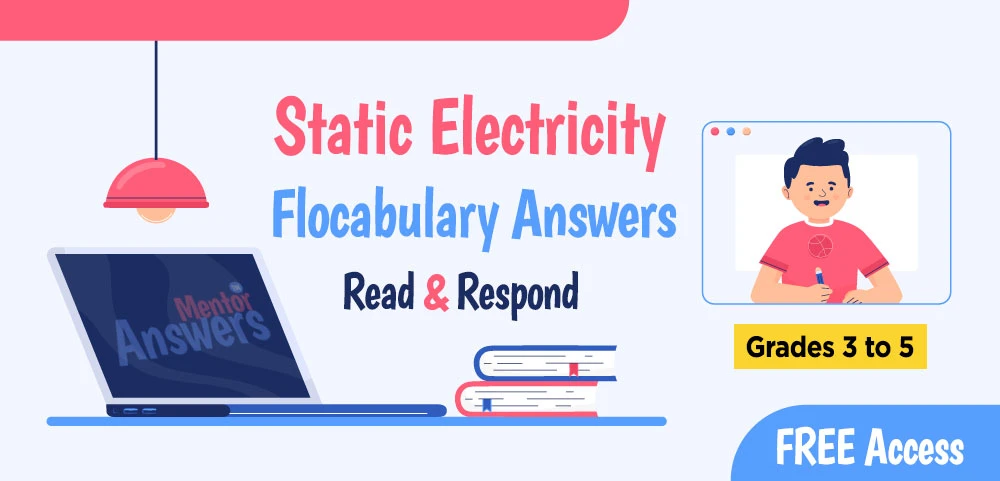Are you looking for a reliable source of answers for the Static Electricity Flocabulary Quiz, Read & Respond? You’ve come to the right place!
We have a team of teachers who have checked and verified the correct answers for all the questions. You can trust our expertise and save time by using our answers key.
Static Electricity Flocabulary Quiz Answers Key
- electrons
- protons
- neutrons
- all of the above
- electrons
- protons
- neutrons
- all of the above
- water molecules sticking together at a surface
- the force of gravity pulling an object to Earth
- a vibration compressing molecules of air
- the build up of electrons on the atoms of an object
- have an equal number of protons and electrons.
- lose neutrons.
- have more electrons than protons.
- have fewer electrons than protons.
- gained protons.
- lost electrons.
- lost protons.
- gained neutrons.
- Neutrons are neutral and located at the center of an atom.
- A girl shocks her brother after walking across a rug.
- Electrons carry a negative charge.
- A light bulb turns on when a closed circuit is created.
- because the socks became neutral in the dryer
- because neither sock is an insulator
- because the socks became charged in the dryer
- because the socks became conductors
- insulator.
- conductor.
- insulator.
- conductor.
- only if it has no electrons.
- if it has no neutrons.
- if it has the same number of protons and electrons.
- if it has the same number of protons and neutrons.
Static Electricity Flocabulary Read & Respond Answers
Expand your knowledge by exploring the Read & Respond answers related to the topic of our Subject:
- Electrons are found at the center of an atom and are constantly in motion.
- Electrons are found around the outside of an atom and are constantly in motion.
- Electrons are found around the outside of an atom and stay in one place.
- Electrons are found at the center of an atom and stay in one place.
- an atom with an equal number of electrons and protons
- an atom with more electrons than protons
- an atom with more protons than electrons
- all of the above
- Objects with the same charge repel each other.
- Objects with the same charge attract each other.
- Objects with the same charge are always neutral.
- Objects with the same charge have “empty seats.”
- the number of protons they have.
- the way they allow or resist the flow of electricity.
- the way they allow or resist the movement of neutrons.
- how much mass their atoms have.
- because they are both positive
- because they are both neutral
- because they do not have the same charge
- because they have lost all their electrons
- opposite charges building up inside a cloud.
- clouds filling up with ice.
- clouds converting sound energy to light energy.
- clouds losing volume.
Are you interested in delving into additional subjects and Lessons related to Flocabulary? Check Here To Get All Flocabulary Answers Key
If you have any questions or need more answers key for your favorite subject, please leave a comment below or contact us through our website. We would love to hear from you and assist you in your learning journey.

